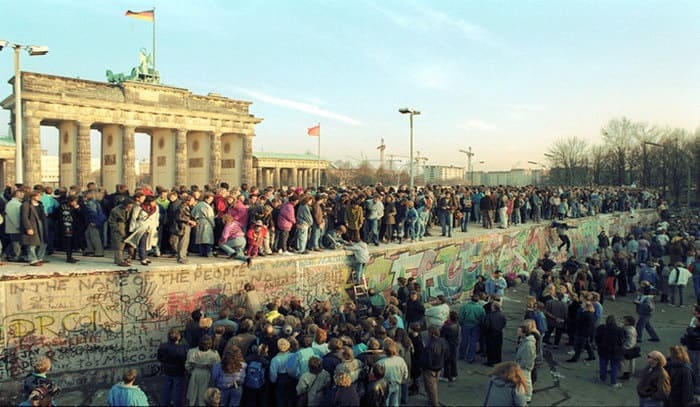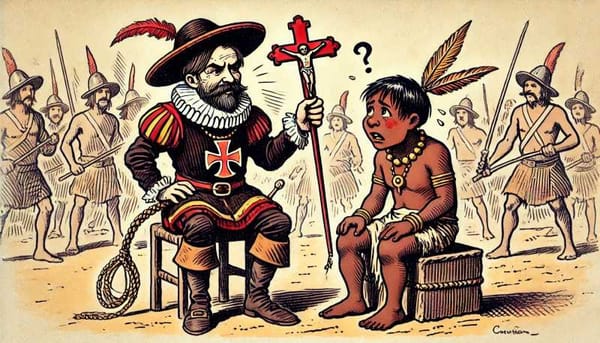The history of the Berlin Wall that many are unfamiliar with
The 9th of November is the anniversary of the fall of the Berlin Wall and to date, there are still curiosities about its construction.

The fall of the Berlin Wall occurred on November 9, 1989, was built at the height of the cold war, and stood for 28 years as a symbol of division and repression in Eastern Europe and one of the most difficult moments in U.S.-Soviet relations. It was originally a barbed wire fence built while Berlin slept during the nights of August 12-13, 1961.
"On that Sunday night, 40,000 soldiers and policemen of the German Democratic Republic were mobilized, who stood at the crossroads between the sectors of the former German capital and erected the barbed wire that isolated the Soviet sector from the western sector of Berlin.
The wall, called "of shame" in the West and the "wall of anti-fascist protection" in the East. (...) It had 169 kilometers of cement and wire fences with deadly devices against those who tried to escape. It had 300 watchtowers, 52 bunkers, and 252 dog paths, with minefields and powerful spotlights," El Diario de Hoy published in the November 12, 1989 edition. The fall of the Berlin Wall was an unprecedented event that marked history, but during the years it stood, it also left cases of escapes and victims of the wall.
On August 19, 1961, Rudolf Urban died, who is considered to be the first mortal victim of the wall. He tried to cross from the East to West Berlin, died when he wanted to come down with a rope from the window of his house to the sidewalk of Bernauer Str. 44.
On November 9, Gunter Schabowski, the head of the Communist Party of East Berlin, declared that as of midnight, East Germans would be free to leave the country, without permission, at any point along the border, including crossing points through the Berlin Wall.
Another victim was Bernd Lünser, 22. In October 1961 in the house of Bernauer Str. 44 there was a gunfight between the West Berlin police and the People's Police, who wanted to prevent the escape of the East Berliner.
One of the cases now known is that of an 18-year-old bricklayer. He was the 31st death victim on the Wall. Lünser jumped over the wall and could not fall on the lifeline, died instantly. To date, the exact number of victims of the Berlin Wall is unknown because there is no record. The Wedding administration had a rock made in Bernauer Strasse near Swinemünder Strasse to commemorate the people who died trying to cross the Wall.
Among the people who have been identified are: "Ida Siekmann, died 22 August 1961, Hans Dieter Wesa, died 23 August 1961, Rudolf Urban, died 17 September 1961, Olga Segler, died 26 September 1961, Bernd Lünser, died 4 October 1961, Ernst Mundt, died 4 September 1962, Ottfried Reck, who died in November 1962, two victims whose identity was unknown at the time, who died on 9 June 1965 and 1 December 1984, and Dietmar Schulz, who died on 25 November 1963", according to the Berlin website.de.
"Between 1961 and 1988, more than 100,000 GDR citizens attempted to flee across the inter-German border of the Berlin Wall. More than 600 people were shot dead by border soldiers from the GDR or otherwise died trying to flee. Some of them drowned, suffered fatal accidents, or committed suicide when they were discovered," reported the Berlin Tourist Office.
Construction
The wall was built by the immense wave of Germans from the GDR fleeing from the communist zone of Berlin to the West. The Soviet government represented by the Unified Socialist Party of Germany decided to erect the wall to divide the city in two. For the Soviet government, it was essential to prevent the escape of its inhabitants, so they employed between 40,000 and 55,000 workers and police to place dozens of concrete panels, bricks, and even rolls of barbed wire to deter those who wanted to cross. The length of the wall was 155 kilometers, 43 of which belonged to the border between the capitalist territory and the communist region.

The Berlin Wall and the incredible escapes to the West
Regardless of any political bias, the world was not the same after the fall of the Berlin Wall. This article has the originality of focusing on escapes, some as unexpected as that of Engels and Wagner. Of course, it was another Engels and another Wagner.
Hitting the wall with a railroad, building a balloon, an airplane, or two wind surfboards with which two audacious claims to have sailed 70 kilometers... all that was part of what happened in the 28 years that the wall resisted repudiation and was used as an argument to exhibit the goodness of the western world and compare them with a gray and impoverished Germany. Of course, the West risked prestige in the matter and some of these leaks smell of fairy tales or exaggeration, and worse things was the Cold War before it was transferred to Latin America.
Saturday 9 November 2019 marked the 30th anniversary of the fall of the Berlin Wall. That day, but in 1989, the wall finally fell, which split the current German capital into two and became the symbol of the division of the German people during the Cold War. From that moment on, the process of unification of the socialist state, then with 16 million inhabitants (Deutsche Demokratische Republik, GDR), began with the Federal Republic of Germany (RFA). On October 3, 1990, there were no longer two German nationalities, but only one.
The beginning of the socialist state and the Berlin Wall
February 11, 1945: Churchill, Roosevelt, and Stalin met in the city of Yalta (Crimea). The victors divided German territory into four zones of occupation: the eastern zone was controlled by the USSR, and the western zone by France, Great Britain, and the United States.
On June 24, 1948, the Soviets, who had occupied East Germany since 1944, began the blockade of the enclave of West Berlin, a fraction of Greater Berlin (883 km2 and 2.3 million inhabitants) granted to the Western Allies and divided into three zones of occupation (English, American, French). "For technical reasons," they cut off land communications between West Berlin and West Germany. Out of 19 million inhabitants, more than 3 million fled to the West before the construction of the Berlin Wall on 13 August 1961.
Construction of the Berlin Wall
On the night of August 12-13, 1961, the authorities of the German Democratic Republic (GDR) erected a fortified compound on the line separating Berlin, the Soviet-occupied zone, from the U.S., English, and French-occupied zones. On August 13, at 0:30 a.m., the vopos (East German policemen) place the barbed wire and Friesian horses (anti-tank structures) along the 43 kilometers of the demarcation line between the two Berliners. At one o'clock in the morning, the GDR press agency announced that the border would remain closed until a peace treaty was signed.
The real Wall, composed of cement plates, complemented by spotlights, mines, and continuous surveillance of the vopes continues day and night. It was patrolled by 600 men with dogs). It was three and a half meters high and 52,000 workers worked in its construction. Communications between the two Berlines were radically cut off, except at four control points, reduced almost in general, to one at the border of the Soviet sector with the American: the very famous "Checkpoint Charlie".
During the Cold War, CheckPoint was the protagonist of the tensest incident. At that point, the Russian and American tanks were face to face, about to open fire after a crisis that lasted 12 hours and could have led the world to a Third World War.
The characteristics of the wall
The length of the belt around West Berlin was 155 kilometers. Of these, the length between West Berlin and East Berlin was 43.1 kilometers. And the length between West Berlin and the GDR outside the city was 111.9 km.
Control towers: 302
Surveillance units: 259.
Viewpoints: 93.
Bunkers: 20.
Measurements:
Height: 3,6 m. minimum.
Width 1.20 m.
Ground depth 2.10 m.
Seventy-five dead for seeking freedom
But the East Germans' determination was very firm: the windows were covered with bricks, the tunnels were blinded with mines and the vopos were, on several occasions, faster than the runners on the run. In the 28 years that the Wall was maintained, 200 people were killed before reaching the western sector, but there could have been more deaths not discovered by objective sources.
Particularly pathetic was the death of 18-year-old bricklayer Peter Fechter, machine-gunned as he climbed the wall before the astonished eyes of Westerners. He was abandoned for an hour at the foot of the wall until he bled to death. When the GDR soldiers finally approached him and took him away, citizens on both sides started shouting "Assassins, assassins! In the days that followed, protests and demonstrations began on the western side, realizing how difficult it would be for friends and family on the eastern side to escape.
Railway knocks down the wall on December 5, 1951
In 1961, train driver Harry Deterling, along with seven family members and 19 other citizens, drove a train through the Berlin Wall at full speed, calling it the "last train to freedom," accelerated the locomotive to full power and managed to break the wall. They all came out unscathed. Staaken station, the last frontier opened until then, would be covered like the rest of the country. Deterling began his journey with total normality.
She stopped at all the stations she was due to and finished at 8.30 pm. But unlike all his routines, once he arrived in Staaken, he didn't stop as he had to. His coalman began to work at full speed and the train could reach 80 kilometers per hour. He crossed the box office wall and moved on. The guards there could only get out of the way and shoot a few bullets, but none of them reached a target. The railroad tracks were closed so that no one else would repeat Deterling's "accident.
The equilibrist 1963
In 1963, East German acrobat Horst Klein crossed a high-voltage cable across the Berlin Wall. It fell off the tightrope but landed in the west. Horst Klein was a recognized anti-communist, who infuriated the East German government. He was forbidden to appear in circuses, which was devastating to his profession as a professional trapeze artist. So Klein decided to escape. He chose to flee through the power lines linking the city. Klein climbed onto an electricity pole and jumped over the large porcelain insulator in the cable.
He was terrified. Klein knew that if he touched the tower and the cable at the same time, it would turn to ashes. He climbed on the cable and slid 64 meters to another insulator. Klein jumped into a second tower and looked down. Klein slid another 27 meters and then began to untangle a rope he had wrapped around his chest. He threw the rope down the cable and tried to descend to the west side. Unfortunately, his hands had fallen asleep in the cold outside of 14 degrees). Klein lost the rope and fell 12 meters. He managed to land a few meters inside the western border. Klein's fall knocked him unconscious for three hours. When he woke up, he shouted for help. A woman listened to him and called the police, who took Klein to the hospital.
Water scooter 1968
Engineering student Bernd Böttger managed to escape underwater. On a starry night in September 1968, he dragged himself half a meter below the surface of the water on a scooter designed by him, powered by an auxiliary bicycle engine. His journey continued for 22 kilometers until the Danish ship "Gedser Rev" picked him up. Böttger further developed his invention for the market. Four years after his escape, Böttger accidentally drowned while diving with friends on the Spanish coast.
Submarine
Ulrich Kujat of Thuringia built a one-man submarine (said to have been accompanied by his wife) in his garage, but a design error and the escape of the submarine would have ended badly. Kujat was discovered before his escape and was in prison for four years without daring to escape.
Balloon 1979
The Strelzyk and Wetzel families sewed a hot air balloon of 1000 square meters of fabric. When they left for West Germany in September 1979, they were the first to venture into the air. Successfully: shortly thereafter, the four adults and four children landed safely in Bavaria.
The flight of the three brothers 1983
This is the story of three German brothers who were born in East Berlin and grew up surrounded by the so-called Wall of Shame. They were three different escapes since they did it individually, but each one was more spectacular than the previous one. The three Bethke brothers were the children of a couple of high officials from East Germany, who grew up under the teachings and principles of their parents who belonged to the Communist Party, but felt so imprisoned by the regime that they dreamed of one day escaping to freedom and knowing the world.
Ingo's escape brought repercussions for the family and her parents lost their jobs. His younger brother, Holger, was constantly watched by the regime because they suspected he could also escape, and in fact, he did. Holger managed to escape eight years later, on 31 March 1983, using a steel cable and wooden pulleys.
Ingo and Holger Bethke with two ultralight planes flew on May 26, 1989, over the Wall to West Berlin, almost in front of the border guards. The planes left the brothers in front of the Reichstag building, from where they disappeared. For 24 hours, the Republic wondered where the plane was coming from. Then the brothers joined the West German police.
By homemade plane "Dowa 81" 1981
His "Dowa 81″, equipped with two ES-250 motorcycle engines and a span of nine meters, was built entirely in a small room in his Dresden apartment. No part of the assembled plane was more than four meters. The altimeter had been Wagner's concern. He bought it at a flea market and it should allow him to fly over the Bavarian border at a height of 50 meters and therefore below the radar detection. The plane was built by Dr. Gerhard Wagner in 1981 to allow him and his family of four to escape from East Germany.
By boat 198
In a boat like this, the four-headed Kostbade family escaped in 1988 on a cold, wet October day. For a total of 111 kilometers, they rowed across the Baltic Sea in the vehicle from Kühlungsborn to Fehmarn.
Windsurfing November 24, 1986
Karsten Klünder loved sailing, both on the boat and the surfboard. The district of Klünder was the Werbellinsee north of Berlin. But in the autumn of 1986, he felt the wind in his hair in the middle of the Baltic Sea, in a spectacular escape from East Germany on the surfboard. Dirk Deckert had found an ally. Klünder who was a sailor like him, together they obtained dry suits and other equipment, polyethylene foam and flat. They made their surfboards with the templates of a West German surf magazine. At dawn, they set sail for Hiddensee, hurried to the narrow island, and launched into the Baltic Sea. The two separated and independently surfed the stormy sea for 70 kilometers until they reached the Danish island of Møn. Later the two met again at a reception center in Gießen.
With armored vehicle and gunshot wound: 1963
Wolfgang Engels was the son of a Stasi official, he had worked in the GDR Border Guard. But then he was arrested near the wall for an alleged escape attempt. The accusations were based on a misunderstanding, but that must have been too much for the 19-year-old. In April 1963 Friedrichsfelde stole an armored personnel carrier from the National People's Army in Berlin and ran in Treptow against the Berlin Wall. The car got stuck on the East German side. Desperately, Engels tried to save himself above the wall to the west. A bullet from a GDR border police went through his lungs, but he managed to reach western territory and survived.
Tunnels
Some 300 people escaped from the GDR through tunnels excavated from West Berlin. During the more than 28 years in which the Wall stood, some 70 tunnels were built below the 155 kilometers of fortification, although only 19 were viable, and allowed some 300 people to flee. In 1961 a sadly famous street, Bernauer Strasse, became a frontier: buildings on one sidewalk remained in West Berlin and those on the other in East Berlin. In that area, there were seven tunnels at a distance of 350 meters, although only three were able to function.
Sources: El Pais




